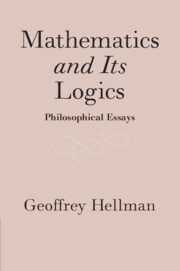Book contents
- Mathematics and Its Logics
- Mathematics and Its Logics
- Copyright page
- Contents
- Acknowledgements
- Introduction
- Part I Structuralism, Extendability, and Nominalism
- Part II Predicative Mathematics and Beyond
- Part III Logics of Mathematics
- 11 Logical Truth by Linguistic Convention
- 12 Never Say “Never”!
- 13 Constructive Mathematics and Quantum Mechanics: Unbounded Operators and the Spectral Theorem
- 14 If “If-Then” Then What?
- 15 Mathematical Pluralism: The Case of Smooth Infinitesimal Analysis
- Index
- References
12 - Never Say “Never”!
On the Communication Problem between Intuitionism and Classicism
from Part III - Logics of Mathematics
Published online by Cambridge University Press: 26 January 2021
- Mathematics and Its Logics
- Mathematics and Its Logics
- Copyright page
- Contents
- Acknowledgements
- Introduction
- Part I Structuralism, Extendability, and Nominalism
- Part II Predicative Mathematics and Beyond
- Part III Logics of Mathematics
- 11 Logical Truth by Linguistic Convention
- 12 Never Say “Never”!
- 13 Constructive Mathematics and Quantum Mechanics: Unbounded Operators and the Spectral Theorem
- 14 If “If-Then” Then What?
- 15 Mathematical Pluralism: The Case of Smooth Infinitesimal Analysis
- Index
- References
Summary
It is commonplace that opposing philosophical schools – whatever their subject – have difficulty communicating with one another, and, indeed frequently talk past one another rather than engage in rational debate. At times, this seems to have been Brouwer’s own view of the relation between intuitionistic and classical approaches to foundations of mathematics. In such circumstances, it is frequently obscure just wherein genuine disagreement – as opposed to merely apparent or verbal disagreement – actually resides, or even whether there really is at bottom any genuine disagreement at all.
Information
- Type
- Chapter
- Information
- Mathematics and Its LogicsPhilosophical Essays, pp. 191 - 211Publisher: Cambridge University PressPrint publication year: 2021
